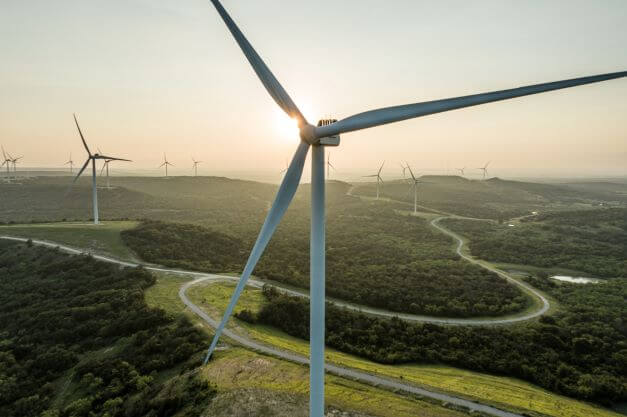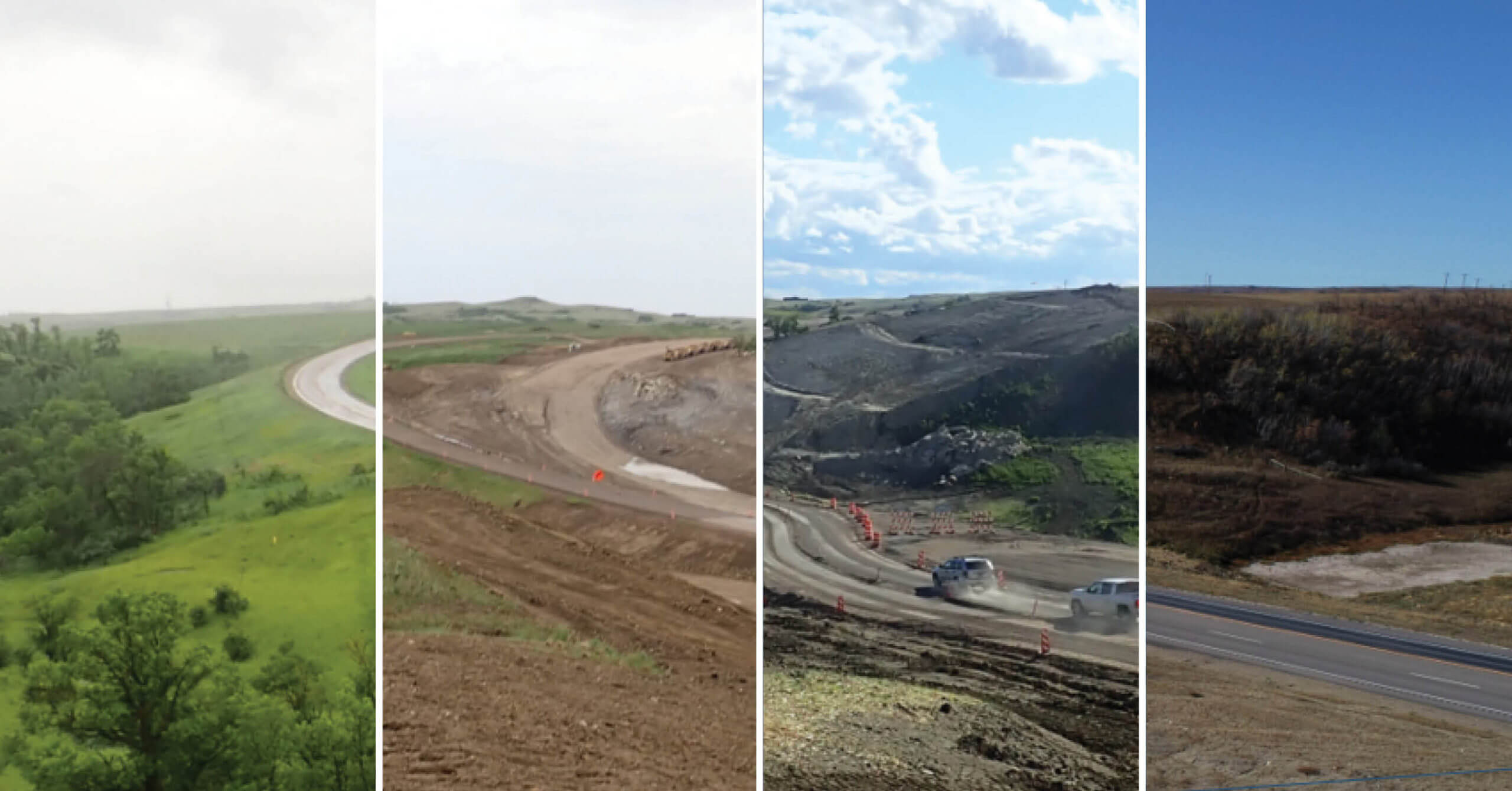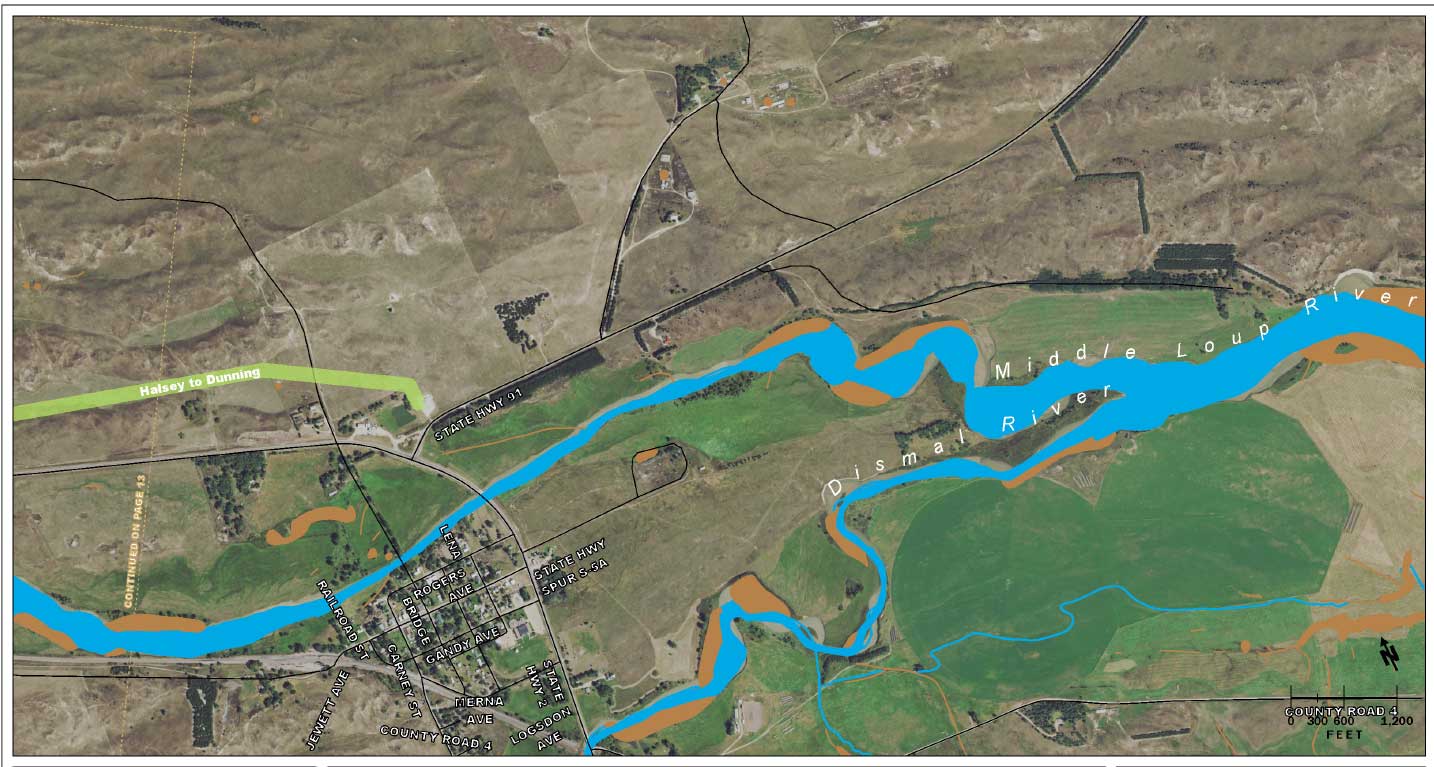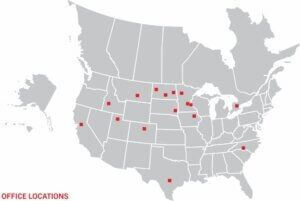Ulteig Noise Modeling Experts Help Clients Create Better Dialogue with Local Communities, Optimizing Project Performance
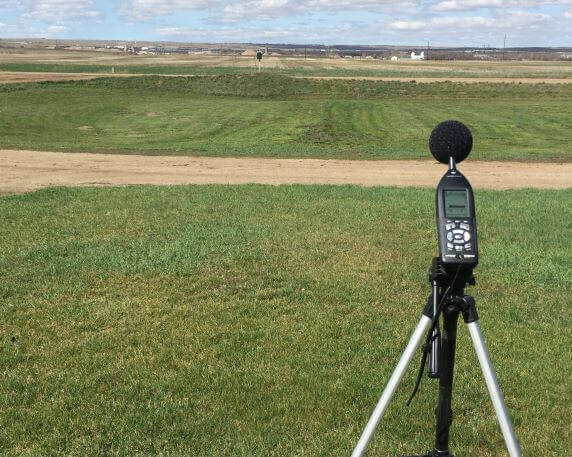
February 17, 2022
Noise analysis and modeling for highways, wind farms and substations informs clients about environmental impact of a project.
All sounds of suburbia: the engine of a lawn mower, the ring of bicycle bells and the thud of car doors when neighbors arrive home. These mellow sounds eventually become so routine we often don’t hear them anymore, but when semi-trucks cross the highway by your home or a wind farm is built on your neighbors’ farmland, we begin to reevaluate our environment – and categorize this sound as different or even bothersome.
The Environmental Protection Agency (EPA), under the 1990 Clean Air Act Amendments, Title IV, defines noise pollution as: “unwanted or disturbing sound.” Sound becomes unwanted when it either interferes with normal activities such as sleeping and conversation, or if it disrupts or diminishes one’s quality of life. The fact that you can’t see, taste or smell it may help explain why it has not received as much attention as other types of pollution, such as air or water pollution. The air around us is constantly filled with sounds, yet most of us would probably not say we are surrounded by noise. Though for some, the persistent and escalating sources of sound can often be considered an annoyance. This “annoyance” can have major consequences, sometimes even to one’s overall health.
Noise Modeling Experts Leverage Cutting-Edge Technology
While noise analysis and modeling is a standard practice for federal transportation projects, in recent years, Ulteig’s Environmental Services team has been analyzing and modeling for anticipated sound levels on other types of projects, such as wind farms and substations. Such projects foreshadow a trend among communities, urban and rural, across the U.S. and Canada in reducing noise levels – and not just for road traffic.
At Ulteig, Design Engineer Nikki Olson specializes in developing models to predict anticipated noise levels for transportation, power and renewables projects designed by Ulteig.
To assist Olson with her work, Ulteig invests in modern software technology that helps her predict sound levels based on various design options. Based on her research and modeling efforts, Olson can confirm if a project is within government standards for acceptable sound levels, or she can make recommendations on how to reduce noise levels to make projects easier on the ears for those in and around the surrounding landscape.
“Sound is measured in decibels, and these sound levels can be perceived differently by different people,” Olson said. “Sound is characterized by both how loud it is and the frequency. People do not hear all frequencies equally. Our sound measurement technology uses an A-weighted scale to approximate the best frequency response to the human ear, making it a more accurate representation of what we hear.”
In addition to meeting federal guidelines, cities, counties, and states may have their own standards (which can be more or less stringent than federal guidelines) for projects that must meet local ordinances and regulations.
Ulteig’s Highway Traffic Noise Studies Cross Rural and Urban Areas
Highway traffic can create noise and sometimes these negative impacts of noise need to be mitigated or minimized. To begin these efforts, Olson conducts a Highway Traffic Noise Analysis and follows federal and state Department of Transportation (DOT) regulations to determine whether sound level impacts exist. If there are impacts, she will analyze and design potential mitigation measures (if applicable), known as noise abatement, to reduce those impacts.
“A noise analysis is required if a transportation project meets certain criteria, such as constructing a highway at a new location, substantial changes to the vertical or horizontal alignment, the addition of an auxiliary lane, the addition or relocation of interchanges lanes, ramps added to complete an existing partial intersection, or numerous other project types,” Olson said.
Modeling to predict potential noise levels gives project stakeholders the opportunity to connect with nearby communities or landowners to create a conversation about the environmental impact of a new project.
“Highway traffic is a concern for a lot of people, especially if there’s going to be high truck traffic,” Olson said. “Noise studies provide transparency about the potential effects of a project on a certain environment or group of people.”
Beyond Roads: Noise Modeling for Wind Turbines and Substations
With national investment in improving the country’s energy grid and a heightened focus on renewable technologies, Olson predicts environmental noise studies will become commonplace for power and renewable projects such as substations and wind farms.
“Especially as renewable energy infrastructure is built closer to cities,” Olson said. “Then we’ll be prioritizing the balance of noise because people will be directly impacted. I think a lot of people are going to be concerned about noise in their proximity, especially residential areas,” Olson adds. “Studies like ours help ease the questions and concerns that nearby residents may have about a wind farm being built because they can see how it may impact their current living environment.”
For these projects, Olson and Ulteig’s Environmental team use ISO 9613-2, which is the international standard for modeling outdoor sound attenuation, for their noise models.
For substations, the size and model of the transformer matters in the amount of sound produced. For wind projects, turbine sound is measured from the location of the motors and blades, central to the turbine.
Citing a recent wind farm project, Olson said a noise analysis is typically performed during the development process after the turbine models and locations have been chosen. The noise analysis uses the chosen location, wind turbine specs, and property lines to determine the noise levels at specified locations. For example, the land use regulations on this project stated the noise levels from a wind energy system or wind farm may not exceed a noise level of more than 50 dB(A) as measured at any point along the common property lines between a nonparticipating property and a participating property. Data with the property lines and turbine locations can be imported directly into the program. Olson used Google Earth to specify the terrain in the project area.
“It’s project specific but I think noise studies should be discussed in the planning phase when builders are considering development regulations and land use,” Olson said. “The noise analysis helps identify if the wind energy system is in accordance with the land use regulations or not. If it is not, additional development can be completed to comply with regulations.”
“In some cases,” she added. “Using different turbine models or spacing out the number of wind turbines can reduce the noise forecasted to be produced by the project. If it’s not a required part of the process, developers may elect to do a study anyway because it will help with public involvement.”
Olson’s Career Lets Her Hear More than the Average Ear
A civil engineer by training, Olson’s career path has been driven by her fascination with sound and noise.
“I think the way that sound is perceived differently by everybody is fascinating,” Olson said. “There are a lot of factors that play into sound. Temperature, topography, cloud cover, traffic speed, etc. All of these things and more can affect sound and the way it’s perceived or the way it travels.”
Olson credits Ulteig for allowing her to explore her passion for noise modeling outside of traditional highway design projects.
“I know a lot more about power and renewables through my noise analysis and modeling work. It allows me to explore niche markets,” Olson said. “I think that’s what I love about it — learning something not everyone knows about.”
But Olson also sees her role as part of a larger, more integrated process at Ulteig to build a sustainable future for North America through high quality infrastructure. Understanding noise and sound impacts are just one part of what Ulteig brings to the table – there’s also understanding other impacts – such as the impact of a project on wildlife, on previous water resources and on air quality, among other elements to consider.
“The noise analysis reports and models we create aren’t stand-alone documents,” Olson said. “Our work is integrated with a variety of other reports on wildlife, wetlands and more, so that our clients get a more complete, more in-depth picture of how their project will impact not only people, but the wider environment.”
Learn More About Ulteig’s Environmental Planning Services
While helping our clients navigate noise pollution is just one service in the myriad of multi-discipline solutions that Ulteig offers, noise analysis and modeling is an integral part of the environmental planning process at Ulteig. The Environmental Planning & Services team works closely with other Ulteig technical resources to design and engineer a project – all under one roof.
Hiring incredibly talented people with diverse skill sets like Nikki Olson is also part of Ulteig’s strategy to become an engineering firm that is building a sustainable future for North America. To learn more about Ulteig’s environmental planning services, click here.
WHAT MAKES ULTEIG DIFFERENT?
From global energy producers to locally funded cities and private developers to government agencies, the clients we serve encompass a broad range of relationships and projects. Find out why Ulteig is a leader in the engineering industry.
Contact Us
